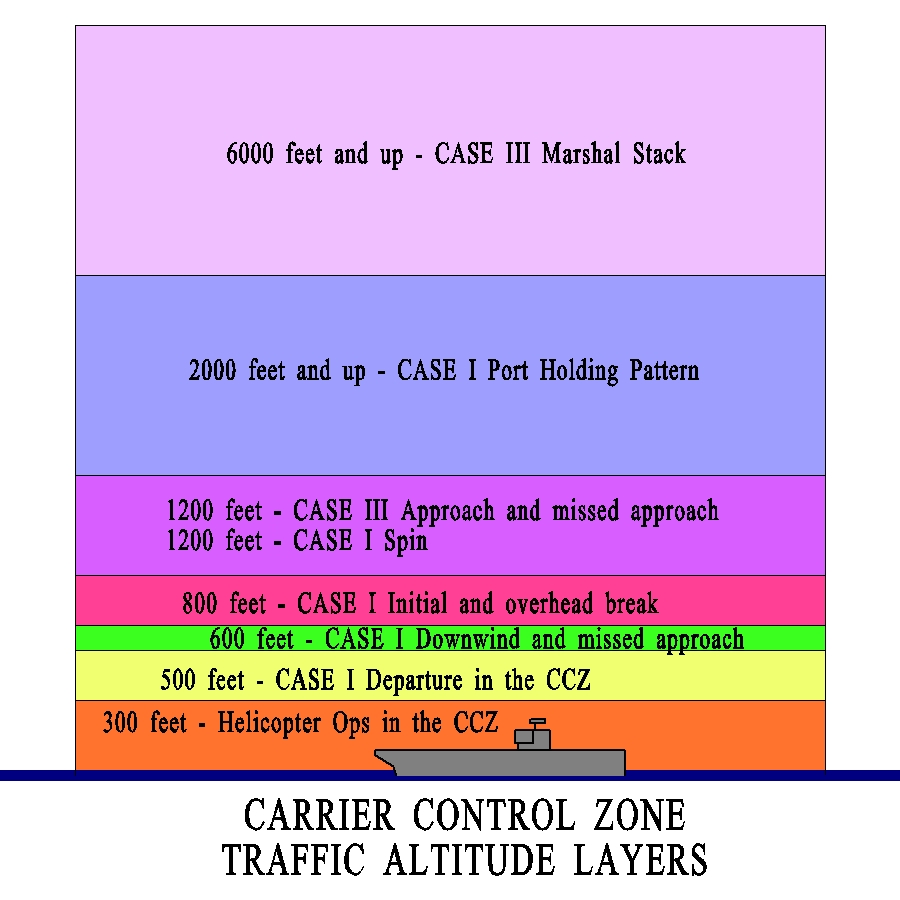I. Departure Procedures
A. Comms / Preparations
All Flying Wrecks boat ATC (bluefor) comms will be on 127.500 Mhz. Taxi, inbound, outbound traffic will communicate on this frequency.
Multiplayer online servers may have a different protocol. In the absence of any protocol, communicate on whatever frequency the carrier is using.
Set TACAN for the Carrier (if available)
B. Taxi
Determine if any inbound traffic is in the recovery pattern before taxi.
Declare flight, number in flight, and desired Cat before taxiing to Cat(s). "Hornet 2-1, flight of two, taxiing to Cat 1 and 2".
C. Cats
If all Catapults happen to be full at the same time, fire in sequence 1-4. 3 and 4 might be reversed sequence as they usually do not allow both to be cocked at the same time. In that case 1, 2, 4, 3.
Take note of your magnetic heading when connected to cat. Your magnetic heading is the Base Recovery Course (BRC) of the carrier.
D. Departure
Immediately upon release from the catapult:
-
Configure aircraft for flight: retract gear and flaps.
-
Execute clearing turn: for CAT 1 execute starboard (right) clearing turn ten degrees starboard of BRC, then immediately back ten degrees to parallel BRC. For CAT 2-4, execute port (left) clearing turn.
-
Establish climb to and maintain 500 feet above sea level to avoid inbound traffic
-
Maintain 300 kts to ensure safe spacing for outbound traffic
-
Unrestricted climb only after 7 miles DME (Distance Measuring Equipment = TACAN)
- Exit carrier control zone (CCZ = 5nm radius around the carrier) and vector to mission WP or flight/strike group rendezvous.
- Optional rendezvous is to exit CCZ at 5nm and re-enter the Port Holding Pattern at 6,000 feet minimum to join with other members of the flight as they depart the carrier.
E. General Traffic Altitude Guide
The area around the carrier controlled by carrier air traffic control is called the Carrier Control Zone (CCV). It generally covers altitudes 6,000 feet and below in a 5 NM radius around the carrier. In addition, during night operations or day operations where visibility is less than 5 NM and ceiling is under 3,000 feet, there will be marshal areas behind and around the carrier which extend from 6,000 to 25,000 feet or more and 25 to 40 NM behind the carrier. Here is a graphic which generally shows the different altitudes for different types of traffic.
